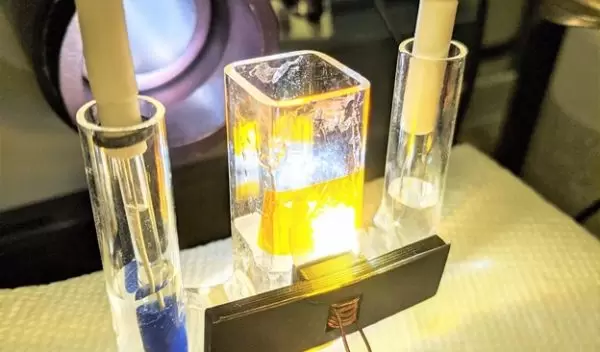
Making clean hydrogen is hard, but researchers have solved a major hurdle
For decades, researchers around the world have searched for ways to use solar power to generate the key reaction for producing hydrogen as a clean energy source -- splitting water molecules to form hydrogen and oxygen. However, such efforts have mostly failed because doing it well was too costly and trying to do it at a low cost led to poor performance.
Now, researchers from The University of Texas at Austin have found a low-cost way to solve one-half of the equation, using sunlight to efficiently split off oxygen molecules from water. The U.S. National Science Foundation-funded finding, published in Nature Communications, is a step toward greater adoption of hydrogen as a key part of energy infrastructure.
"You need materials that are good at absorbing sunlight and, at the same time, don't degrade while the water-splitting reactions take place," said co-author Edward Yu. "It turns out materials that are good at absorbing sunlight tend to be unstable under the conditions required for the water-splitting reaction, while the materials that are stable tend to be poor absorbers of sunlight.
"These conflicting requirements drive you toward a seemingly inevitable tradeoff, but by combining multiple materials -- one that efficiently absorbs sunlight, such as silicon, and another that provides good stability, such as silicon dioxide -- into a single device, this conflict can be resolved."
However, this creates another challenge -- the electrons and holes created by absorption of sunlight in silicon must be able to move easily across the silicon dioxide layer. This usually requires the silicon dioxide layer to be no more than a few nanometers, which reduces its effectiveness in protecting the silicon absorber from degradation.
The key to a breakthrough came through a method of creating electrically conductive paths through a thick silicon dioxide layer that can be performed at low cost and scaled to high manufacturing volumes.


